By Chloey Norris
In 2012, the United Nations General Assembly selected March 21 to celebrate the International Day of Forests annually. The goals of celebrating this important day include raising awareness of the importance of forests in addition to educating people on what they can do to contribute to reforestation. The UN encourages individual countries to take action with activities locally, nationally, and internationally to promote reforestation.
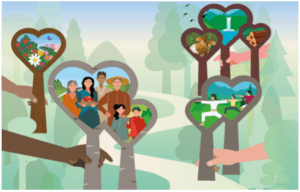 On the United Nations website, a summary of the International Day of Forests stresses the necessity of healthy, flourishing forests of all types across the globe. Despite the infinite benefits forests provide the Earth, its ecosystems, climate, and resources, deforestation continues, and the human population remains unaware of the devastating effects that will soon result. Thus, the theme for this year’s International Day of Forests is “Forest Restoration: A Path to Recovery and Well-Being.” Reforestation and forests’ sustainability are crucial to combating the ever-worsening crisis of climate change and threats to biodiversity.
On the United Nations website, a summary of the International Day of Forests stresses the necessity of healthy, flourishing forests of all types across the globe. Despite the infinite benefits forests provide the Earth, its ecosystems, climate, and resources, deforestation continues, and the human population remains unaware of the devastating effects that will soon result. Thus, the theme for this year’s International Day of Forests is “Forest Restoration: A Path to Recovery and Well-Being.” Reforestation and forests’ sustainability are crucial to combating the ever-worsening crisis of climate change and threats to biodiversity.
Dr. Catherine Duckett, the Associate Dean of Monmouth University’s School of Science, is an expert on the subject and provided an informative explanation in regard to the International Day of Forests and its significance. She stated that this day “emphasizes and celebrates the forests that humans and other creatures need for a healthy life. Stability of a healthy forest allows much less susceptibility to pandemic disease or pest outbreaks. Moreover, healthy forests are important to maintain water systems that people and agriculture need. Forests transpire, which promotes local rainfall, and forest root systems filter and retain water ensuring a steady distribution of clean water in their watersheds.” This explanation describes forests’ crucial benefits as well as why it is so important to maintain them.
In an interview with the IGU Director, Professor Randall Abate, who also has extensive experience with this topic from a law and policy perspective, he expanded on the human population’s ignorance of forests’ importance, their significance as a resource, reforestation and sustainable management’s benefits, and what readers can do to contribute to reforestation.
He first explained that the reason people often underestimate the significance of forests is that they appear to be a vast, unlimited resource. Deforestation is not an issue close to home, so the urgent reality of the situation is not visible for them. Humans are also unaware of the integral role that forests play in promoting biodiversity and mitigating climate change. On the issue of individuals who are aware of issues affecting the world’s forests but continue to destroy them, he explained that this cognitive dissonance is motivated by “short-term, profit focused thinking” in efforts to drive the economy and to make as much money as possible.
 Professor Abate identified the dual efforts for reforestation and sustainable management as the solution to all the issues affecting forests. Reforestation and afforestation are both necessary; reforestation refers to rebuilding forests in places they once existed, and afforestation is the introduction of forests to locations where they did not previously exist. These healthy, thriving forests’ presence will serve as a hub for increased biodiversity and are a valuable weapon in mitigating and adapting to climate change. A healthy ecosystem is resilient, and its resilience can better adapt to the effects of climate change. Moreover, photosynthesis in forests draws carbon out of the air, which makes intact forests valuable carbon sinks in the fight against climate change.
Professor Abate identified the dual efforts for reforestation and sustainable management as the solution to all the issues affecting forests. Reforestation and afforestation are both necessary; reforestation refers to rebuilding forests in places they once existed, and afforestation is the introduction of forests to locations where they did not previously exist. These healthy, thriving forests’ presence will serve as a hub for increased biodiversity and are a valuable weapon in mitigating and adapting to climate change. A healthy ecosystem is resilient, and its resilience can better adapt to the effects of climate change. Moreover, photosynthesis in forests draws carbon out of the air, which makes intact forests valuable carbon sinks in the fight against climate change.
Finally, you can contribute to these efforts! You can donate to help others plant trees, spread awareness, conduct research on the Rights of Nature Movement, continue to educate yourself and others, and be mindful of your own contributions that affect the environment.
Professor Abate identified the following resources for readers to learn and contribute more:
Community Environmental Legal Defense Fund
The Nature Conservancy
Additionally, here are other websites dedicated to reforestation that you can financially support:
National Forest Foundation
United States Forest Service
The Gifted Tree
All in all, the UN National Day of Forests is an extremely important celebration of the forests, which are the backbone of our planet. It is our responsibility to raise awareness, educate, and contribute to the causes of reforestation, afforestation, combating climate change, and protecting biodiversity. We can make a difference!

 included undergraduate student and aspiring educator Emma Cooper’s Spanish Ode to Mother Earth — which she wrote for a course with Associate Professor Dr. Alison Maginn in the Department of World Languages and Cultures — and the School of Social Work graduate student Hannah Burke’s “The Embalming Song,” which explores unsustainable modern death practices and her post-mortem plan to honor the Earth. Burke also delivered a presentation on the subject the following day during the Monmouth University Student Panel along with interdisciplinary presentations from four other undergraduate and graduate students. Other contributions include Julia Poaella’s original poetry on social isolation during the COVID-19 pandemic, and fifth grader Jeff Jiju’s recommendations for sustainable living.
included undergraduate student and aspiring educator Emma Cooper’s Spanish Ode to Mother Earth — which she wrote for a course with Associate Professor Dr. Alison Maginn in the Department of World Languages and Cultures — and the School of Social Work graduate student Hannah Burke’s “The Embalming Song,” which explores unsustainable modern death practices and her post-mortem plan to honor the Earth. Burke also delivered a presentation on the subject the following day during the Monmouth University Student Panel along with interdisciplinary presentations from four other undergraduate and graduate students. Other contributions include Julia Poaella’s original poetry on social isolation during the COVID-19 pandemic, and fifth grader Jeff Jiju’s recommendations for sustainable living.
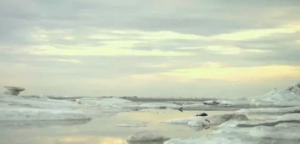 Throughout the documentary, the village faces a huge obstacle: climate change. The filmmaker, Gina Abatemarco, explores how climate change impacts Kivalina and its community members. The film also delves into the people’s lifestyles, culture, food sources, and views on climate change as well as the government’s role in response to this ongoing threat.
Throughout the documentary, the village faces a huge obstacle: climate change. The filmmaker, Gina Abatemarco, explores how climate change impacts Kivalina and its community members. The film also delves into the people’s lifestyles, culture, food sources, and views on climate change as well as the government’s role in response to this ongoing threat.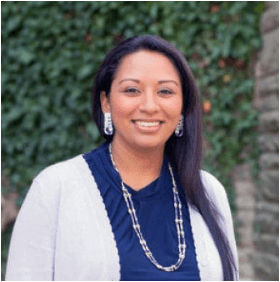 commentary portion of the event, the audience heard from three speakers: Enoch Adams, a member of Kivalina; Dr. Kelsey Leonard, an assistant professor in the Faculty of Environment at the University of Waterloo in Ontario and an expert on indigenous legal rights; and Gina Abatemarco, the filmmaker. Mr. Adams described how Kivalina has been moving forward in its evacuation efforts due to climate change. He discussed how the island has built an evacuation road and hosts a new inland school site. Furthermore, he stated that the community is split about the new school, as the majority of the community stayed while some community members decided to live near the new school. He also noted that the community is fond of Abatemarco, the filmmaker, and how she embraced the community.
commentary portion of the event, the audience heard from three speakers: Enoch Adams, a member of Kivalina; Dr. Kelsey Leonard, an assistant professor in the Faculty of Environment at the University of Waterloo in Ontario and an expert on indigenous legal rights; and Gina Abatemarco, the filmmaker. Mr. Adams described how Kivalina has been moving forward in its evacuation efforts due to climate change. He discussed how the island has built an evacuation road and hosts a new inland school site. Furthermore, he stated that the community is split about the new school, as the majority of the community stayed while some community members decided to live near the new school. He also noted that the community is fond of Abatemarco, the filmmaker, and how she embraced the community.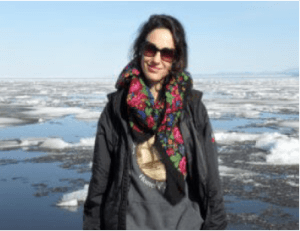 sense of place that Kivalina was experiencing. During her seven-year journey in making the film, she formed deep friendships and connections and, through doing so, gained knowledge about the culture.
sense of place that Kivalina was experiencing. During her seven-year journey in making the film, she formed deep friendships and connections and, through doing so, gained knowledge about the culture. the 2019 film Honeyland. Dr. Thomas Pearson moderated this event with faculty discussants Dr. Pedram Daneshgar and Dr. Mihaela Moscaliuc on March 11 at 7:30 p.m. via Zoom.
the 2019 film Honeyland. Dr. Thomas Pearson moderated this event with faculty discussants Dr. Pedram Daneshgar and Dr. Mihaela Moscaliuc on March 11 at 7:30 p.m. via Zoom.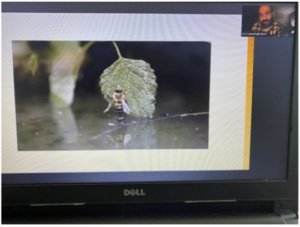 Associate Professor of Biology and recipient of the 2020 Distinguished Teaching Award at Monmouth University, has extensively researched the biology and ecology of the stars of the film: bees. He emphasized that bees work extremely hard to gather nectar and pollen when flowers are in bloom. While consuming some, they ultimately bring back much more to the hive in order to sustain it, especially during the inactive winter months.
Associate Professor of Biology and recipient of the 2020 Distinguished Teaching Award at Monmouth University, has extensively researched the biology and ecology of the stars of the film: bees. He emphasized that bees work extremely hard to gather nectar and pollen when flowers are in bloom. While consuming some, they ultimately bring back much more to the hive in order to sustain it, especially during the inactive winter months.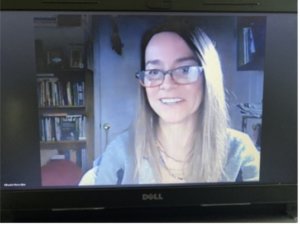 Dr. Mihaela Moscaliuc, Associate Professor of English and the recipient of a Fulbright fellowship to Romania, discussed bees in their ecological symbolism across cultures and recent centuries. She also examined the interaction and structures of labor and care between the characters Hatidze and Hussain. Both of these characters depend on natural resources for survival; however, they represent two different positions on how their dependency works.
Dr. Mihaela Moscaliuc, Associate Professor of English and the recipient of a Fulbright fellowship to Romania, discussed bees in their ecological symbolism across cultures and recent centuries. She also examined the interaction and structures of labor and care between the characters Hatidze and Hussain. Both of these characters depend on natural resources for survival; however, they represent two different positions on how their dependency works. an beings are merely guests to the home that is the Earth. She lives and works with the bees — not as their owner but as a guest in a world where there are sufficient resources for everyone as long as each person learns that there is enough on which to live and enough to sell if one can behave responsibly and honor the resources that others provide.
an beings are merely guests to the home that is the Earth. She lives and works with the bees — not as their owner but as a guest in a world where there are sufficient resources for everyone as long as each person learns that there is enough on which to live and enough to sell if one can behave responsibly and honor the resources that others provide. On the United Nations website, a summary of the International Day of Forests stresses the necessity of healthy, flourishing forests of all types across the globe. Despite the infinite benefits forests provide the Earth, its ecosystems, climate, and resources, deforestation continues, and the human population remains unaware of the devastating effects that will soon result. Thus, the theme for this year’s International Day of Forests is “Forest Restoration: A Path to Recovery and Well-Being.” Reforestation and forests’ sustainability are crucial to combating the ever-worsening crisis of climate change and threats to biodiversity.
On the United Nations website, a summary of the International Day of Forests stresses the necessity of healthy, flourishing forests of all types across the globe. Despite the infinite benefits forests provide the Earth, its ecosystems, climate, and resources, deforestation continues, and the human population remains unaware of the devastating effects that will soon result. Thus, the theme for this year’s International Day of Forests is “Forest Restoration: A Path to Recovery and Well-Being.” Reforestation and forests’ sustainability are crucial to combating the ever-worsening crisis of climate change and threats to biodiversity. Professor Abate identified the dual efforts for reforestation and sustainable management as the solution to all the issues affecting forests. Reforestation and afforestation are both necessary; reforestation refers to rebuilding forests in places they once existed, and afforestation is the introduction of forests to locations where they did not previously exist. These healthy, thriving forests’ presence will serve as a hub for increased biodiversity and are a valuable weapon in mitigating and adapting to climate change. A healthy ecosystem is resilient, and its resilience can better adapt to the effects of climate change. Moreover, photosynthesis in forests draws carbon out of the air, which makes intact forests valuable carbon sinks in the fight against climate change.
Professor Abate identified the dual efforts for reforestation and sustainable management as the solution to all the issues affecting forests. Reforestation and afforestation are both necessary; reforestation refers to rebuilding forests in places they once existed, and afforestation is the introduction of forests to locations where they did not previously exist. These healthy, thriving forests’ presence will serve as a hub for increased biodiversity and are a valuable weapon in mitigating and adapting to climate change. A healthy ecosystem is resilient, and its resilience can better adapt to the effects of climate change. Moreover, photosynthesis in forests draws carbon out of the air, which makes intact forests valuable carbon sinks in the fight against climate change. Since the COVID-19 pandemic began one year ago, colleges and universities have struggled to maintain a calendar of social events and activities to bring their students together. The tides are changing, though, as students and administrators slowly reintroduce more events to campus life. One upcoming event, sponsored by the Institute of Global Understanding (IGU), will surely bring a breath of fresh air to Monmouth’s campus community. As the three-day 2021 IGU Biennial Symposium approaches with its kickoff on Thursday, March 25, an entirely student-led social activity is in the works: the inaugural Open Mic Night.
Since the COVID-19 pandemic began one year ago, colleges and universities have struggled to maintain a calendar of social events and activities to bring their students together. The tides are changing, though, as students and administrators slowly reintroduce more events to campus life. One upcoming event, sponsored by the Institute of Global Understanding (IGU), will surely bring a breath of fresh air to Monmouth’s campus community. As the three-day 2021 IGU Biennial Symposium approaches with its kickoff on Thursday, March 25, an entirely student-led social activity is in the works: the inaugural Open Mic Night.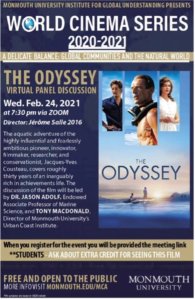 On February 24, the Institute for Global Understanding (IGU) co-hosted a virtual discussion of the film The Odyssey. Hosted by Dr. Thomas Pearson, Professor of History, the discussion featured UCI Director Tony MacDonald, Esq. and Dr. Jason Adolf, Associate Professor of Biology and Endowed Associate Professor of Marine Science. The virtual discussion was an invigorating and highly educational reflection on the current state of the oceans and how they impact human life and activities.
On February 24, the Institute for Global Understanding (IGU) co-hosted a virtual discussion of the film The Odyssey. Hosted by Dr. Thomas Pearson, Professor of History, the discussion featured UCI Director Tony MacDonald, Esq. and Dr. Jason Adolf, Associate Professor of Biology and Endowed Associate Professor of Marine Science. The virtual discussion was an invigorating and highly educational reflection on the current state of the oceans and how they impact human life and activities.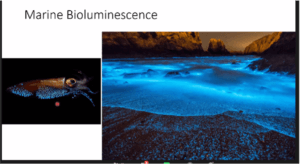 t, Dr. Jason Adolf offered his comments about the film and on oceanic research. He discussed how little is known about the ocean due to the lack of funding and exploration. As his research focus is on phytoplankton and light in the ocean, he discussed the technology that one would need to see and photograph the ocean at different depths, as well as the bioluminescence of marine life. With less light in the water at greater depths, there is less color in the environment. Additionally, there is a special bioluminescence in plankton and in other sea creatures, though little research is available. There is a wide variety of marine animals that use bioluminescence, but since humans can see blue light, the blue light disguises the special fluorescence.
t, Dr. Jason Adolf offered his comments about the film and on oceanic research. He discussed how little is known about the ocean due to the lack of funding and exploration. As his research focus is on phytoplankton and light in the ocean, he discussed the technology that one would need to see and photograph the ocean at different depths, as well as the bioluminescence of marine life. With less light in the water at greater depths, there is less color in the environment. Additionally, there is a special bioluminescence in plankton and in other sea creatures, though little research is available. There is a wide variety of marine animals that use bioluminescence, but since humans can see blue light, the blue light disguises the special fluorescence.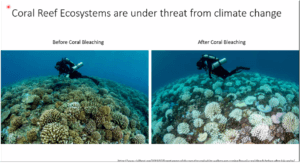 Dr. Adolf then explained how coral reefs are the most threatened marine habitats due to climate change. These reefs are susceptible to temperature change, as 90 percent of Earth’s excess heat is held at the oceans’ surface. As a result of rising temperatures, there will be a mass coral bleaching that will destroy all coral reefs.
Dr. Adolf then explained how coral reefs are the most threatened marine habitats due to climate change. These reefs are susceptible to temperature change, as 90 percent of Earth’s excess heat is held at the oceans’ surface. As a result of rising temperatures, there will be a mass coral bleaching that will destroy all coral reefs. The United Nations created World Wildlife Day in 2013 to promote awareness of wild animals and plants, as well as to celebrate these species. This commemorative day is celebrated on March 3. It is now recognized as the most important global annual event dedicated to the world’s wildlife. It draws attention to endangered species and the work that people around the world are doing to save these species and their ecosystems.
The United Nations created World Wildlife Day in 2013 to promote awareness of wild animals and plants, as well as to celebrate these species. This commemorative day is celebrated on March 3. It is now recognized as the most important global annual event dedicated to the world’s wildlife. It draws attention to endangered species and the work that people around the world are doing to save these species and their ecosystems.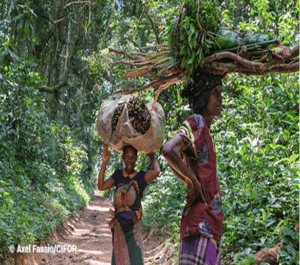 ildlife Day theme, “Forests and Livelihoods: Sustaining People and Planet,” focuses on how forests, and their species and ecosystems, help sustain people’s livelihoods. Forests affect indigenous peoples’ livelihoods more than any other ecosystem and help indigenous peoples meet their basic needs, including food, shelter, energy, and medicine.
ildlife Day theme, “Forests and Livelihoods: Sustaining People and Planet,” focuses on how forests, and their species and ecosystems, help sustain people’s livelihoods. Forests affect indigenous peoples’ livelihoods more than any other ecosystem and help indigenous peoples meet their basic needs, including food, shelter, energy, and medicine.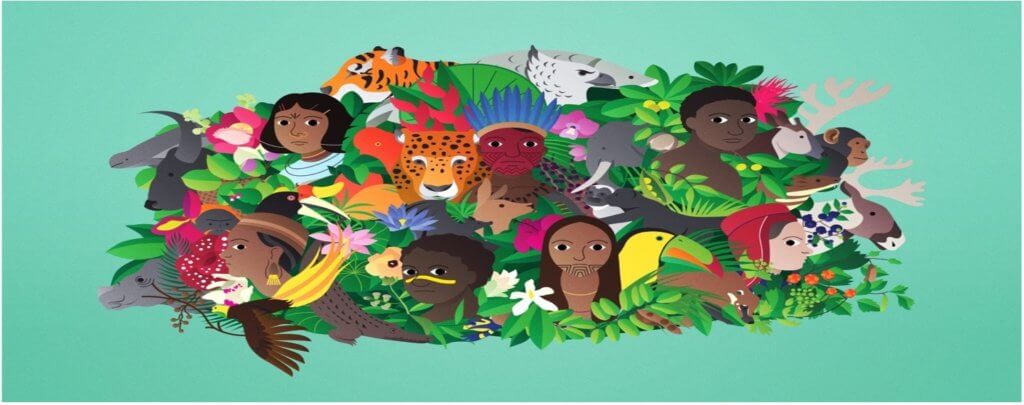
 On February 16, 2021, the Institute for Global Understanding (IGU) co-sponsored the Tuesday Night World Music Record Club’s discussion of Love Letters (2020), Anoushka Shankar’s most recent release. Nominated for a Grammy in the Best Global Music Album category, the EP consists of six songs: “Bright Eyes,” “Those Words,” “Lovable,” “Space,” “Wallet,” and “In This Mouth.” Dr. Meghan Hynson, Assistant Professor of Ethnomusicology, led participants through a thoughtful discussion spanning Shankar’s musical evolution as well as the intricacies of each Love Letters track. She contributed a substantive context to every song introduced, facilitating an immersive and collaborative listening experience for all in attendance.
On February 16, 2021, the Institute for Global Understanding (IGU) co-sponsored the Tuesday Night World Music Record Club’s discussion of Love Letters (2020), Anoushka Shankar’s most recent release. Nominated for a Grammy in the Best Global Music Album category, the EP consists of six songs: “Bright Eyes,” “Those Words,” “Lovable,” “Space,” “Wallet,” and “In This Mouth.” Dr. Meghan Hynson, Assistant Professor of Ethnomusicology, led participants through a thoughtful discussion spanning Shankar’s musical evolution as well as the intricacies of each Love Letters track. She contributed a substantive context to every song introduced, facilitating an immersive and collaborative listening experience for all in attendance. Without question, Love Letters showcases Shankar’s mastery of the sitar. Shankar’s father, legendary Indian musician Ravi Shankar, first introduced her to the instrument at the age of seven. By the time she turned thirteen, Shankar’s professional career had taken shape and she had already performed on stage and produced an album. As her musical prowess grew increasingly evident, she opted not to attend university and instead followed in her father’s footsteps as a musical pioneer and performer of the sitar.
Without question, Love Letters showcases Shankar’s mastery of the sitar. Shankar’s father, legendary Indian musician Ravi Shankar, first introduced her to the instrument at the age of seven. By the time she turned thirteen, Shankar’s professional career had taken shape and she had already performed on stage and produced an album. As her musical prowess grew increasingly evident, she opted not to attend university and instead followed in her father’s footsteps as a musical pioneer and performer of the sitar. y quite well, for it functions, in Dr. Hynson’s words, as a “fascinating fusion of the sitar and a number of other musical instruments.” For example, the single, “Bright Eyes” integrates the ghatam, a traditional water pot percussion instrument that is played with the mouth pressed against the player’s stomach. The player taps the surface of the ghatam with the fingers and the base of the palm and changes the pitch and resonance of the instrument by varying the pressure of the pot against the stomach. In this way, the EP incorporates a classic Indian aesthetic of sitar, ghatam, kanjira, and tanpura with modern Western pop instrumentation, to create a hybrid sound appealing to a variety of listeners.
y quite well, for it functions, in Dr. Hynson’s words, as a “fascinating fusion of the sitar and a number of other musical instruments.” For example, the single, “Bright Eyes” integrates the ghatam, a traditional water pot percussion instrument that is played with the mouth pressed against the player’s stomach. The player taps the surface of the ghatam with the fingers and the base of the palm and changes the pitch and resonance of the instrument by varying the pressure of the pot against the stomach. In this way, the EP incorporates a classic Indian aesthetic of sitar, ghatam, kanjira, and tanpura with modern Western pop instrumentation, to create a hybrid sound appealing to a variety of listeners. Notably, Love Letters could not exist if not for the efforts of a host of trail-blazing women. The album featured a number of female musicians and writers, as well as a female musical engineer from Brooklyn, Heba Kadry. Ayanna Witter-Johnson plays the cello on the second track, “Those Words,” and Shilpa Rao (Indian vocals), Alev Lenz, Nina Harries, and twin sisters Ibeyi are all featured vocalists on the record. Their collaboration was integral to the EP’s creation, supporting Shankar both musically and spiritually. In reflecting on the EP’s production, Shankar explained, “I really got to experience the way women show up for each other when crisis strikes. That’s really where this music came from: the shared experience of women, holding my hand and helping me find a safe place to put some of my feelings.”
Notably, Love Letters could not exist if not for the efforts of a host of trail-blazing women. The album featured a number of female musicians and writers, as well as a female musical engineer from Brooklyn, Heba Kadry. Ayanna Witter-Johnson plays the cello on the second track, “Those Words,” and Shilpa Rao (Indian vocals), Alev Lenz, Nina Harries, and twin sisters Ibeyi are all featured vocalists on the record. Their collaboration was integral to the EP’s creation, supporting Shankar both musically and spiritually. In reflecting on the EP’s production, Shankar explained, “I really got to experience the way women show up for each other when crisis strikes. That’s really where this music came from: the shared experience of women, holding my hand and helping me find a safe place to put some of my feelings.”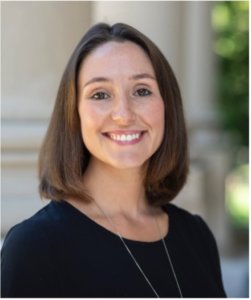 Love Letters signifies a departure from Shankar’s typical releases. Indeed, according to Dr. Hynson, the EP serves as “documentation of this profound period of upheaval” in Shankar’s recent history. From health issues to divorce, Shankar has grappled with losses that transcended her personal narrative and made their way into her songwriting. As a result, Love Letters emits a rather “somber,” “introspective,” and “cathartic” tone. At the same time, Shankar was careful not to craft her songs in an idiosyncratic manner, instead aiming for lyrics equally poignant and unspecific so that listeners could interpret her music in their own way. Therefore, Love Letters embodies a journey to healing, meeting listeners exactly where they are in hopes of elevating their spirits to some better place.
Love Letters signifies a departure from Shankar’s typical releases. Indeed, according to Dr. Hynson, the EP serves as “documentation of this profound period of upheaval” in Shankar’s recent history. From health issues to divorce, Shankar has grappled with losses that transcended her personal narrative and made their way into her songwriting. As a result, Love Letters emits a rather “somber,” “introspective,” and “cathartic” tone. At the same time, Shankar was careful not to craft her songs in an idiosyncratic manner, instead aiming for lyrics equally poignant and unspecific so that listeners could interpret her music in their own way. Therefore, Love Letters embodies a journey to healing, meeting listeners exactly where they are in hopes of elevating their spirits to some better place. The next speaker, Dr. Samira Idllalène, addressed how the “atmospheric waqf principle” can be applied to the marine environment to respond to climate change impacts. Dr. Idllalène stated that the atmospheric waqf principle is a belief in the Muslim religion that values the idea of trusteeship and can be utilized in a way to respect animals and the natural environment to which they belong. She supported her argument by noting that waqf is an existing legal tool in Muslim countries as well as an ancestral institution with ecological applications. Moreover, “[T]here is a growing spiritual ecology movement happening across the globe, and atmospheric waqf allows animals additional protections by ensuring climate change does not affect their environment.”
The next speaker, Dr. Samira Idllalène, addressed how the “atmospheric waqf principle” can be applied to the marine environment to respond to climate change impacts. Dr. Idllalène stated that the atmospheric waqf principle is a belief in the Muslim religion that values the idea of trusteeship and can be utilized in a way to respect animals and the natural environment to which they belong. She supported her argument by noting that waqf is an existing legal tool in Muslim countries as well as an ancestral institution with ecological applications. Moreover, “[T]here is a growing spiritual ecology movement happening across the globe, and atmospheric waqf allows animals additional protections by ensuring climate change does not affect their environment.”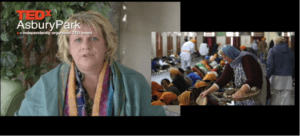 Dr. Jodry shared her passion for service during an intimate discussion of her first meeting with Courtney Deacon Lalotra, the founder of One Life to Love, a nonprofit organization and orphanage that provides education, nutrition, and health care to migrant children with mental and physical disabilities in New Delhi, India. A mutual friend introduced Dr. Jodry to Ms. Deacon Lalotra shortly after Dr. Jodry received a cancer diagnosis in 2015 that she says created “a new identity” for her, leaving her “more fearful.” Ms. Deacon Lalotra’s selfless and courageous devotion to offering basic necessities, love, and care to children of the greatest need inspired Dr. Jodry to find meaning and healing in service.
Dr. Jodry shared her passion for service during an intimate discussion of her first meeting with Courtney Deacon Lalotra, the founder of One Life to Love, a nonprofit organization and orphanage that provides education, nutrition, and health care to migrant children with mental and physical disabilities in New Delhi, India. A mutual friend introduced Dr. Jodry to Ms. Deacon Lalotra shortly after Dr. Jodry received a cancer diagnosis in 2015 that she says created “a new identity” for her, leaving her “more fearful.” Ms. Deacon Lalotra’s selfless and courageous devotion to offering basic necessities, love, and care to children of the greatest need inspired Dr. Jodry to find meaning and healing in service.